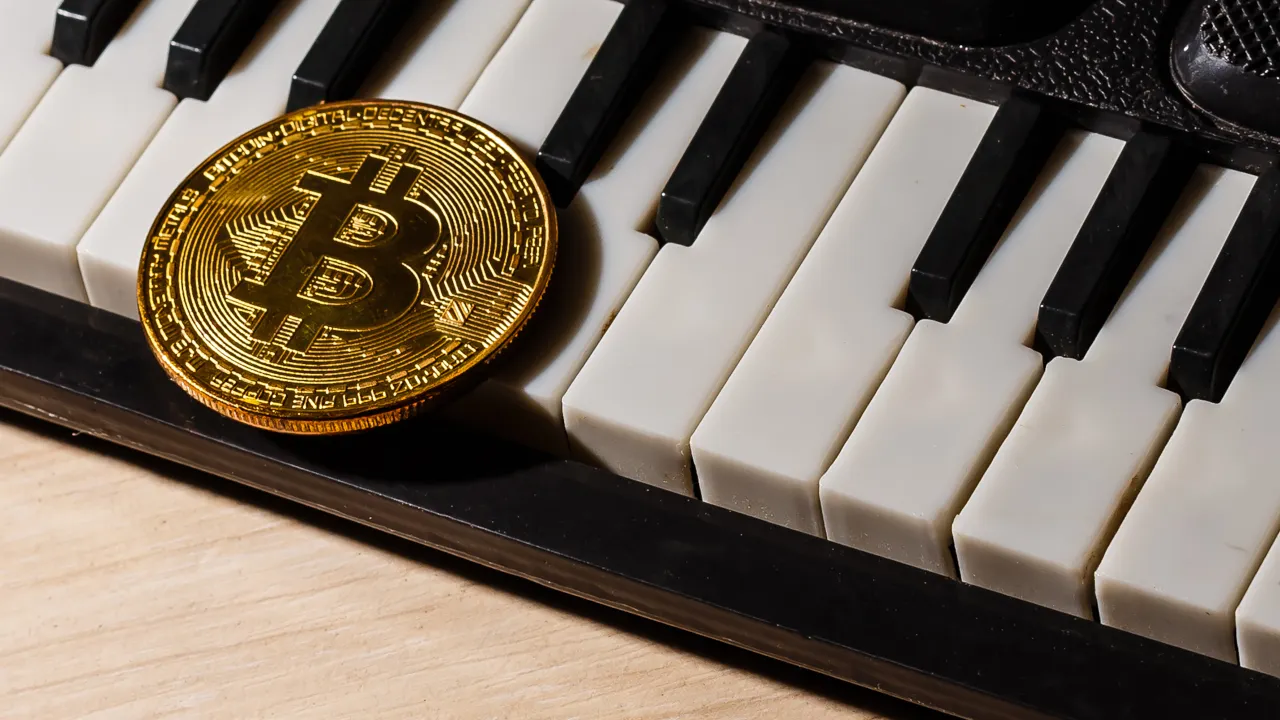Inscribing artwork, games, and even meme tokens on the Bitcoin blockchain would have seemed unimaginable a year ago—but thanks to Ordinals, it’s all happening. And over the weekend, someone used the protocol to put a fully on-chain music engine onto Bitcoin.
The “Descent Into Darkness Music Engine” was inscribed onto the Bitcoin blockchain on Saturday, with 10 editions minted and sold as individual Ordinals.
By entering a few keywords, anyone—not just the owner of each inscription—can instantly generate a music track.
Created by pseudonymous indie developer Ratoshi, the music engine is intended as a companion to his Descent into Darkness text-based RPG, and the outputs have a retro “chiptune” vibe to them. Ratoshi told Decrypt that they used OpenAI’s ChatGPT to help develop the sounds that were ultimately used within the on-chain app.
As an on-chain app, it follows other Bitcoin-based apps and games—such as the inventive camera-based Chainspace, and playable clones of games like Doom and Pac-Man.
The Bitcoin-based music engine leverages a recent innovation within the Ordinals community—what developers are referring to as “recursive inscriptions.”
Previously, inscriptions were siloed and could not “speak” to one another. But with recursive inscriptions, Ordinals can “call” data from already-inscribed assets on the blockchain, similar to the composability of Ethereum protocols as developers point smart contracts to different destinations.
This allows Ordinals developers to circumvent the 4MB block storage limitations of Bitcoin inscriptions—a far cry lower than what is needed for modern video game projects, as well as other large-scale applications.
The storage efficiency most importantly drastically reduces the costs of inscribing on-chain projects onto Bitcoin over time, allowing developers to scale inscription data at the base blockchain layer without relying on layer-2 solutions.
“Thanks to recursive inscriptions, I need to inscribe the code only once,” Ratoshi told Decrypt. “Each subsequent inscription is then a much smaller HTML file that is able to reuse that pre-inscribed JavaScript file for future projects.”
As an example, Ratoshi said that instead of paying $40 worth of Bitcoin in network fees to make each inscription for a larger-scale project, they could pay $40 for the first one and then a much smaller fee for the smaller, subsequent inscriptions. It could be as big of a difference as paying just $5 worth of fees for the later inscriptions.
Thanks to the potentially vast savings to put media and apps on the Bitcoin blockchain, recursive inscriptions could unlock a wave of innovation for different projects within the Ordinals community. As noted by pseudonymous Ord.io founder Leonidas, NFT project OnChainMonkey is using the feature to put 3D artwork on-chain with an inscription under 1KB in total size.
Ordinals was launched in January by developer Casey Rodarmor, who exploited a loophole in Bitcoin’s 2021 Taproot upgrade, enabling the inscription of various data file formats onto the Bitcoin blockchain.
Each Ordinal is tied to a single satoshi, or the smallest unit of measurement of Bitcoin (1/100,000,000 BTC), and the launch of the Ordinals protocol has unlocked a growing economy of NFT-like asset trading on Bitcoin—and meme tokens too. More than 14.6 million Ordinals have been inscribed since January.
Daily Debrief Newsletter
Start every day with the top news stories right now, plus original features, a podcast, videos and more.

